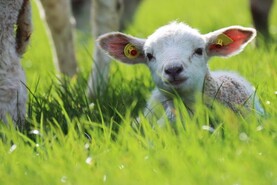Lamb performance on Tullamore Farm has improved significantly over the last month, with the latest batch of lambs drafted for slaughter on Thursday 24 August recording a 2.4% higher kill-out.
The 34 lambs had an average liveweight of 47.6kg and an average deadweight of 21.6kg, equating to an average kill-out of 45.4%.
The base price was €6.40/kg, with four U grading lambs paid a 10c/kg bonus. One lamb in the batch recorded a fat score of two and was cut 10c/kg.
This left the average price at €6.41/kg, with the average sale value per lamb recorded at €136.44/kg.
Variation in performance
While the overall slaughter performance improved, there was still variation in performance, albeit not to the same scale as the batch drafted at the end of July.
The 21 ram lambs were drafted at a higher average liveweight of 49kg.
This was mainly due to the fact that a percentage of older ram lambs bred from Mule ewes were lacking flesh and needed additional feeding before drafting.
The kill-out ranged from 42% to 45%, with a couple of lambs killing back to 40.2%, while a small number of younger lambs and those bred from continental-cross ewes achieved kill-outs ranging from 45% to a top of 48%.
Ewe lambs
The average weight of the 13 ewe lambs was 45.5kg (range from 43kg to 48kg), with an average kill-out of 47.5%.
The lowest kill-out was 44.2%, while a number of young Charollais-cross lambs bred from Texel-cross and Suffolk-cross ewe lambs killed out at 48% to 50%.
Daily liveweight gain has been lower recently in ewe lambs, which is not surprising, given ram lambs have had their level of concentrate supplementation increased from 0.3kg to 0.5kg.
But, as expected, flesh cover in ewe lambs is on average much better than ram lambs.
Improved performance
The introduction of concentrate supplementation at the end of July has been central to lamb performance improving.
Lambs were grazing on good-quality grass swards, but the low dry matter in swards was having a significant effect on performance.
Feeding of concentrates has lifted dry matter intake, reduced the rate of grass passing through the animals' systems and overall performance.
Worm count shock
Farm manager Shaun Diver received a shock this week when the latest faecal egg count recorded a result of in excess of 2,500 eggs per gramme.
Lambs remaining on the farm have been treated with an avermectin-based wormer and faecal egg counts will continue on a two- to three-week basis.






 This is a subscriber-only article
This is a subscriber-only article










SHARING OPTIONS: